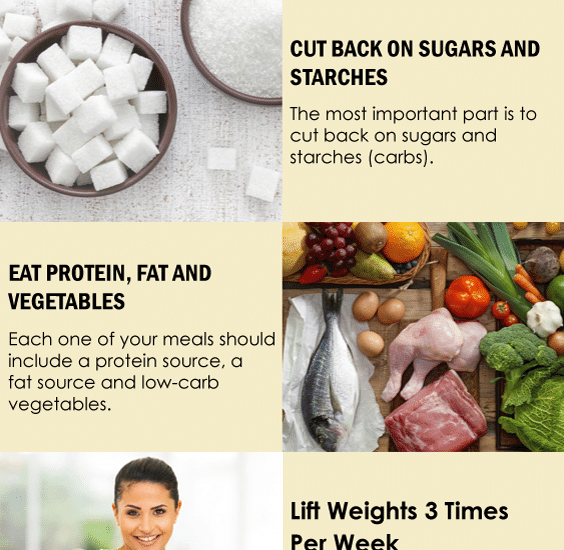Jogging To Lose Weight For Beginners | Best Weight Loss Tips!
Embarking on a journey to lose weight can be daunting, especially if you’re new to exercise. But fear not! There’s a simple and effective solution that’s accessible to everyone: jogging. Whether you’re aiming to shed a few pounds or kickstart a healthier lifestyle, jogging offers numerous benefits for beginners. In this comprehensive blog, we will explore everything that you need to know about jogging to lose weight for beginners, from getting started to staying motivated and seeing results.
The Basics of Jogging To Lose Weight
Welcome to the exciting world of jogging! In this chapter, we’ll dive into the fundamentals of jogging, why it’s an excellent choice for weight loss, how it stacks up against other exercises, and the key mechanics you need to master as a beginner jogger. Plus, we’ll tackle some common obstacles that might be holding you back from hitting the pavement with confidence.
What is jogging, and why is it beneficial for weight loss?
Jogging is a form of aerobic exercise characterized by a steady, moderate-paced run that’s faster than walking but not as intense as sprinting. It’s a fantastic way to get your heart pumping, burn calories, and improve your overall fitness level. But what makes jogging particularly appealing for weight loss?
Firstly, jogging is a highly efficient calorie-burning activity. Depending on factors like your weight, speed, and terrain, you can torch anywhere from 300 to 600 calories per hour. That’s a significant amount of energy expenditure that can help create the calorie deficit necessary for weight loss.
Secondly, jogging engages multiple muscle groups throughout your body, including your legs, core, and even your arms. This means you’re not only burning calories during your run but also building lean muscle mass, which can further boost your metabolism and aid in fat loss over time.
Lastly, jogging is accessible to almost everyone and requires minimal equipment. All you need is a good pair of running shoes, some comfortable clothing, and a safe place to jog, whether it’s a local park, a neighborhood trail, or even a treadmill at home. This accessibility makes jogging a convenient and sustainable exercise option for people of all fitness levels.
How does jogging compare to other forms of exercise for weight loss?
While jogging is undeniably effective for weight loss, how does it stack up against other types of exercise? The truth is, the best exercise for weight loss is the one you enjoy and can stick with consistently. However, jogging does offer some unique advantages that make it particularly well-suited for shedding pounds.
For starters, jogging is a weight-bearing exercise, which means it puts stress on your bones and muscles, helping to strengthen them over time. This can be especially beneficial for individuals looking to prevent or manage conditions like osteoporosis.
Additionally, jogging is a form of high-impact cardio, which has been shown to be more effective at burning calories and fat than low-impact activities like walking or cycling. This makes jogging a great choice for those looking to maximize their calorie burn and accelerate their weight loss efforts.
Understanding the mechanics of jogging: proper form, pace, and intensity
Now that we’ve covered the why let’s talk about the how. Mastering the mechanics of jogging is essential for both maximizing your performance and preventing injury. Here are some key principles to keep in mind:
Proper form: Maintain an upright posture with your head up, shoulders relaxed, and arms bent at a 90-degree angle. Land on the middle of your foot and roll through to push off from your toes. Avoid over striding, as this can lead to inefficient running and potential injury.
Pace: As a beginner jogger, start at a comfortable pace that allows you to maintain a conversation without gasping for breath. This may mean starting with a brisk walk and gradually increasing your speed as you build endurance.
Intensity: Pay attention to your perceived exertion level, aiming for a moderate-intensity effort that feels challenging but sustainable. You should be able to maintain your pace for at least 20 to 30 minutes without feeling completely exhausted.
Overcoming common obstacles and concerns for beginner joggers
As with any new endeavor, beginner joggers may encounter obstacles and concerns along the way. Here are some common challenges you might face and how to overcome them:
Lack of motivation
Find a jogging buddy or join a local running group to stay accountable and motivated. Set specific goals and reward yourself for reaching milestones along the way.
Fear of injury
Start slowly and listen to your body. Incorporate rest days into your routine to allow for recovery, and consider cross-training with low-impact activities like swimming or cycling to reduce the risk of overuse injuries.
Time constraints
Schedule your jogging sessions at a time that works best for you, whether it’s first thing in the morning, during your lunch break, or in the evening after work. Remember that even short bursts of exercise can add up over time, so prioritize consistency over duration.
Self-consciousness
Don’t worry about what others may think. Remember that everyone has to start somewhere, and most people are too focused on their own workouts to pay attention to yours. Focus on your goals and celebrate your progress, no matter how small.
Get, Set, Go! Jogging To Lose Weight!
Congratulations on taking the first step towards your jogging journey! In this chapter, we’ll dive into the essentials of getting started with jogging, including setting realistic goals, finding the right gear, creating a jogging routine, and incorporating warm-up and cool-down exercises to maximize your success and minimize your risk of injury.
Setting Realistic Goals: How Much Weight Can You Expect to Lose Through Jogging?
One of the most exciting aspects of starting a jogging routine is the potential for weight loss. But it’s essential to set realistic expectations and understand that weight loss is a gradual process that takes time and dedication. While individual results may vary, a general guideline is to aim for a weight loss of 1-2 pounds per week through a combination of diet and exercise, including jogging.
Remember that weight loss isn’t just about the number on the scale. It’s also about improving your overall health and fitness, building endurance, and boosting your confidence and well-being. Focus on setting goals that are realistic, achievable, and sustainable for the long term, rather than fixating solely on a specific number.
Choosing the Right Gear: Finding the Perfect Pair of Running Shoes and Comfortable Clothing
When it comes to jogging, the right gear can make all the difference in your comfort, performance, and injury prevention. Start by investing in a good pair of running shoes that provide adequate support, cushioning, and stability for your feet and gait. Visit a specialty running store to get professionally fitted and find the perfect pair for your individual needs.
In addition to shoes, choose lightweight, moisture-wicking clothing that allows for freedom of movement and helps keep you dry and comfortable during your workouts. Consider factors like weather conditions, temperature, and personal preferences when selecting your attire, and don’t forget to wear sunscreen and protective gear like hats or sunglasses when jogging outdoors.
Creating a Jogging Routine: Determining the Frequency, Duration, and Intensity of Your Workouts
Consistency is key when it comes to jogging for weight loss. Start by establishing a regular jogging routine that fits into your schedule and allows for adequate rest and recovery. Aim for a minimum of three to four jogging sessions per week, with each session lasting at least 20-30 minutes or longer if possible.
Gradually increase the duration and intensity of your workouts as your fitness level improves, but be careful not to overdo it. Listen to your body and pay attention to signs of fatigue, pain, or discomfort, and adjust your workouts accordingly. Incorporate a mix of steady-state jogging, interval training, and cross-training activities to keep your workouts challenging and engaging.
Warm-Up and Cool-Down Exercises to Prevent Injury and Enhance Performance
Before each jogging session, take a few minutes to warm up your muscles and prepare your body for exercise. This can include dynamic stretches, brisk walking, or light jogging to increase blood flow and flexibility. After your workout, don’t forget to cool down with some gentle stretches to help reduce muscle soreness and promote recovery.
Incorporating warm-up and cool-down exercises into your routine not only helps prevent injury but also enhances your overall performance and improves your recovery time. Plus, it’s a great opportunity to tune into your body, quiet your mind, and set positive intentions for your workout.
Building Endurance and Progressing Safely During Jogging To Lose Weight
By focusing on gradual progression, incorporating interval training, listening to your body, and tracking your progress, you’ll build the stamina and confidence you need to crush your fitness goals while minimizing the risk of injury.
The Importance of Gradual Progression: Starting Slow and Gradually Increasing Intensity and Duration
When it comes to jogging, slow and steady wins the race. It’s essential to start at a pace and duration that feels comfortable for you and gradually increase both intensity and duration as your fitness improves. Pushing yourself too hard or too fast can lead to burnout, injury, or demotivation, so be patient and allow your body time to adapt and progress naturally.
Incorporating Interval Training and Speed Work to Boost Calorie Burn and Fitness Levels
Interval training is a powerful tool for boosting calorie burn, improving cardiovascular fitness, and breaking through plateaus. By alternating between periods of high-intensity jogging and recovery periods of lower intensity or rest, you can maximize your workout efficiency and torch more calories in less time. Experiment with different interval ratios, such as 1:1, 2:1, or even pyramid intervals, to find what works best for you and keeps your workouts challenging and engaging.
Listening to Your Body: Recognizing Signs of Fatigue, Injury, and When to Take Rest Days
Your body is your best guide when it comes to jogging. Pay attention to signals like muscle fatigue, joint pain, or excessive soreness, as these may indicate that you’re pushing yourself too hard or risking injury. It’s essential to strike a balance between pushing your limits and respecting your body’s need for rest and recovery. If you experience persistent discomfort or pain, don’t hesitate to take a rest day or consult with a healthcare professional to address any potential issues before they worsen.
Tracking Progress: Keeping a Jogging Journal to Monitor Improvements in Distance, Speed, and Stamina
Tracking your progress is not only motivating but also essential for gauging your improvement and identifying areas for growth. Keep a jogging journal or use a fitness tracking app to record details like distance, duration, speed, perceived exertion, and how you felt during and after each workout. This allows you to celebrate your successes, set new goals, and stay accountable to yourself as you continue on your jogging journey.
Finally, jogging is a fantastic way for beginners to kickstart their weight loss journey and improve overall health and fitness. By following the guidelines outlined in this comprehensive guide, you’ll be well-equipped to start jogging with confidence, overcome obstacles, and achieve your weight loss goals. Remember, consistency is key, so lace up those running shoes, hit the pavement, and watch as the pounds start to melt away. Happy jogging!
You can also read slimming secrets or diet for weight loss



